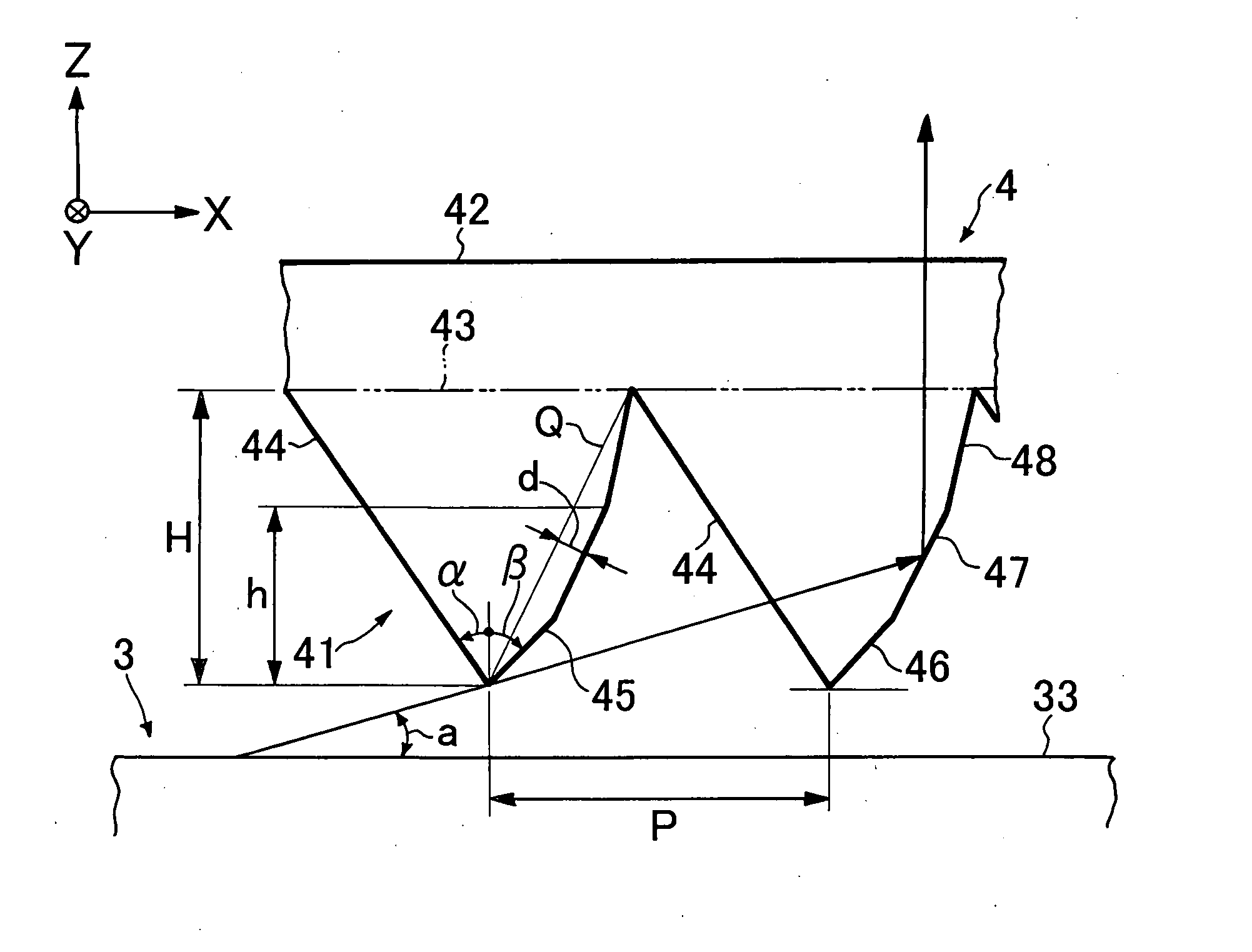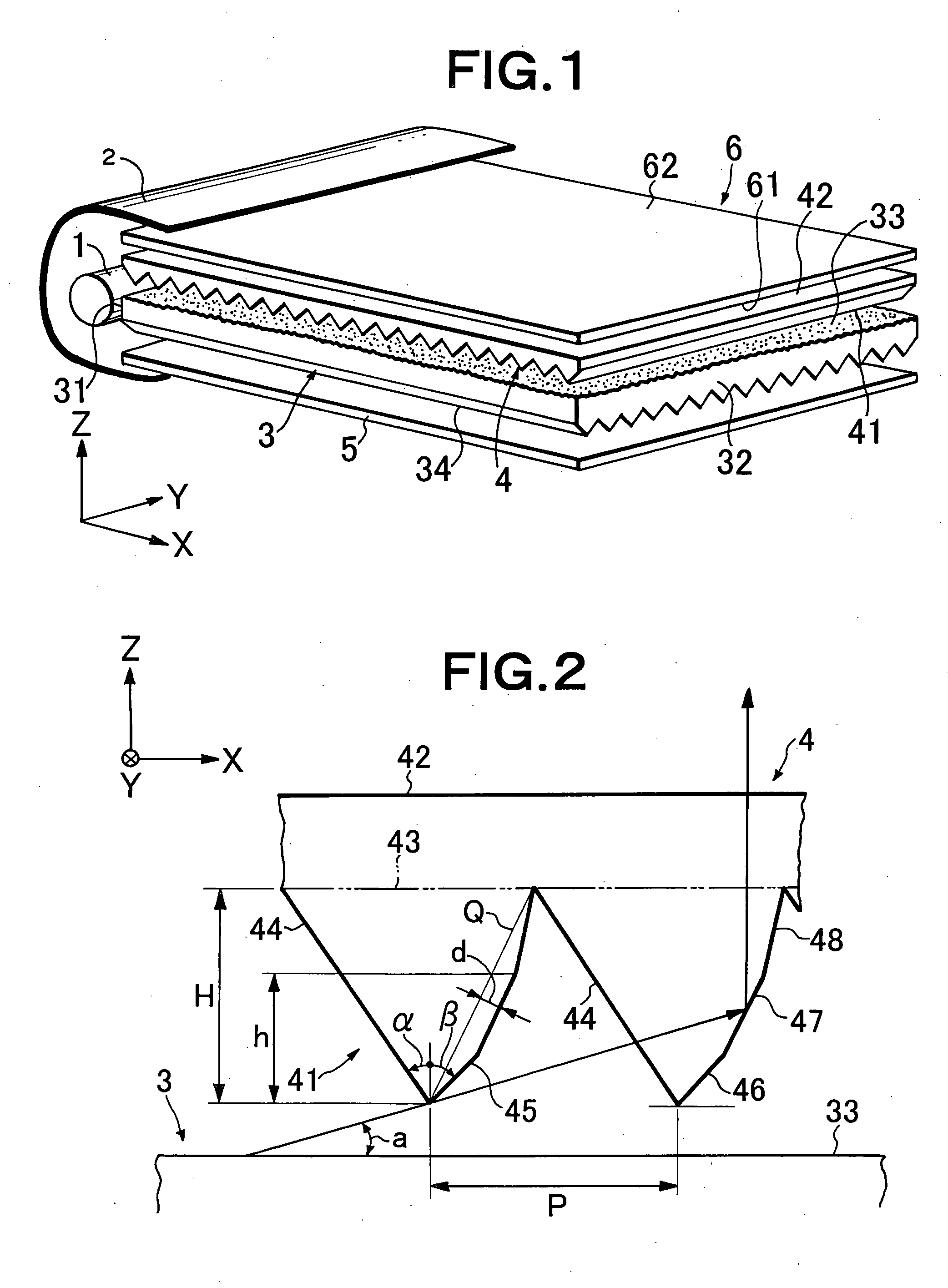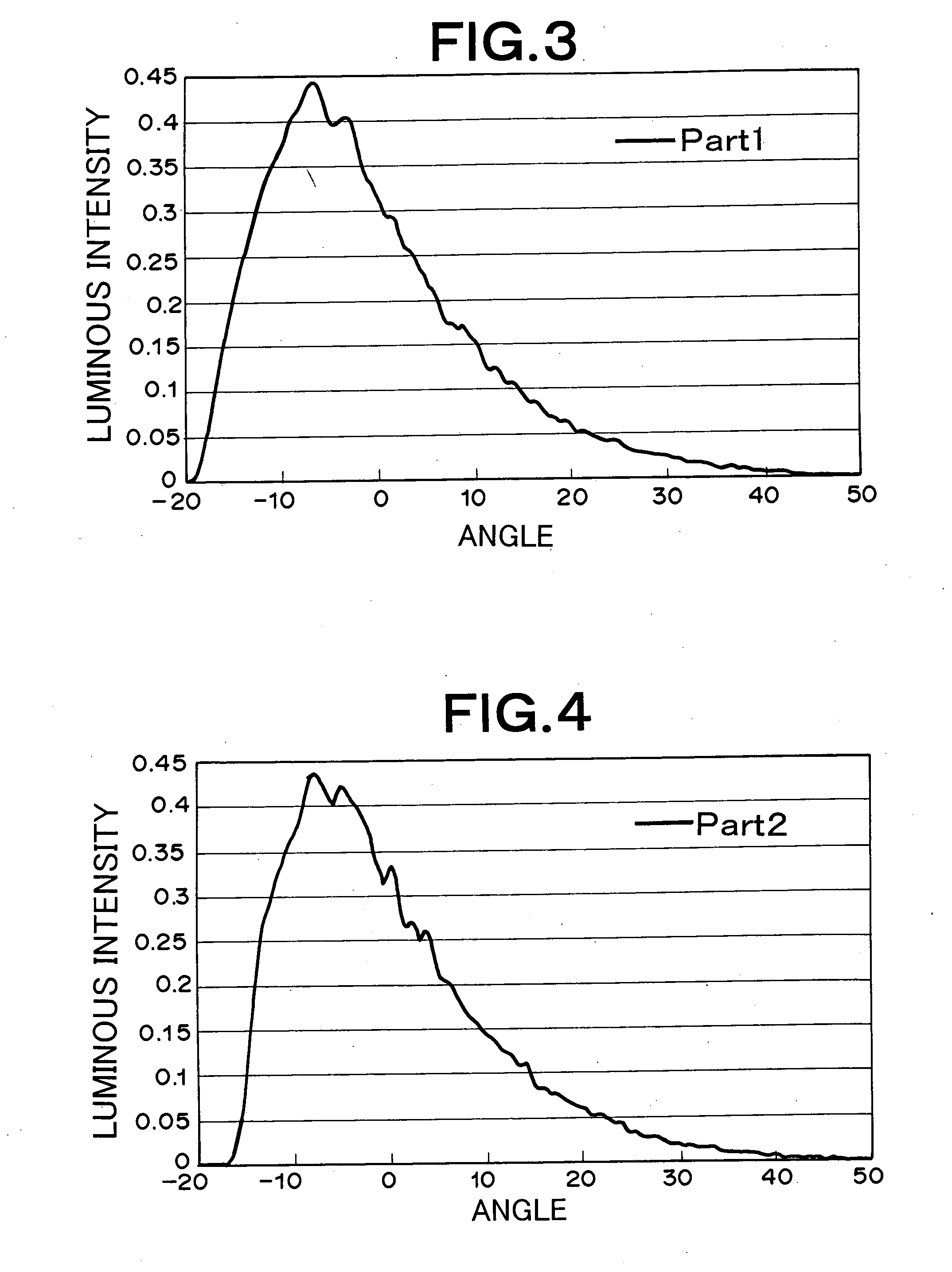Light deflection element and light source apparatus using the same
a technology of light source apparatus and deflection element, which is applied in the direction of mechanical apparatus, lighting and heating apparatus, instruments, etc., can solve problems such as complicated formation
- Summary
- Abstract
- Description
- Claims
- Application Information
AI Technical Summary
Benefits of technology
Problems solved by technology
Method used
Image
Examples
example 1
[0162] Using an acrylic resin (Acrypet VH5#000 produced by Mitsubishi Rayon Co., Ltd.), a light guide having one surface in the form of a mat surface was prepared by injection molding. The light guide had a wedge-plate shape having a size of 216 mm×290 mm with thicknesses 2.0 mm-0.7 mm. On a mirror finished surface of this light guide was formed a prism layer made of an acrylic ultraviolet curing resin and having elongated prisms successively arrayed side by side at a pitch of 50 μm and with a prism vertical angle of 100 degrees and each extending in parallel to a side of 216 mm (short side) of the light guide. A cold-cathode tube was disposed along one side end surface (end surface on the side with the thickness 2.0 mm) corresponding to a side of 290 mm (long side) of the light guide, while the cold-cathode tube was covered with a light source reflector (silver reflection film produced by Reikosha). Further, light diffusion reflection films (E60 produced by Toray Industries, Inc.) ...
example 2
[0165] A prism sheet was prepared like in Example 1 except that, as shown in Table 3, a second prism surface of each elongated prism was formed by seven flat surfaces (areas 1, 2, . . . 7, in order from the side of the prism vertex portion), i.e. a flat surface (β=34.8 degrees) formed from the prism vertex portion to a height 16 μm of the elongated prism and having an inclination angle of 55.2 degrees, and six flat surfaces of the same width formed from the height 16 μm of the elongated prism to the prism bottom portion in order of inclination angles of 55.5 degrees, 56.2 degrees, 57.0 degrees, 57.8 degrees, 58.4 degrees, and 59.4 degrees from the side closer to the prism vertex portion. A ratio (d / P) of a maximum distance (d) between the second prism surface of the prism sheet and a virtual flat plane for the second prism surface relative to the pitch (P) of the elongated prisms was 1.10%.
[0166] The obtained prism sheet was placed in such a manner that the elongated prism formed s...
example 3
[0167] A prism sheet was prepared like in Example 1 except that, as shown in Table 3, a second prism surface of each elongated prism was formed by two flat surfaces and one convex curved surface (areas 1, 2, and 3, in order from the side of the prism vertex portion), i.e. a flat surface (β=33.6 degrees) formed from the prism vertex portion to a height 10.6 μm of the elongated prism and having an inclination angle of 56.4 degrees, a flat surface formed from the height 10.6 μm to a height 21.3 μm of the elongated prism and having an inclination angle of 56.8 degrees, and a convex curved surface (inclination angle=59.2 degrees) formed from and above the height 21.3 μm of the elongated prism and having a circular-arc shape in section with a radius of curvature of 400 μm. A ratio (d / P) of a maximum distance (d) between the second prism surface of the prism sheet and a virtual flat plane for the second prism surface relative to the pitch (P) of the elongated prisms was 1.03%.
[0168] The o...
PUM
 Login to View More
Login to View More Abstract
Description
Claims
Application Information
 Login to View More
Login to View More - R&D
- Intellectual Property
- Life Sciences
- Materials
- Tech Scout
- Unparalleled Data Quality
- Higher Quality Content
- 60% Fewer Hallucinations
Browse by: Latest US Patents, China's latest patents, Technical Efficacy Thesaurus, Application Domain, Technology Topic, Popular Technical Reports.
© 2025 PatSnap. All rights reserved.Legal|Privacy policy|Modern Slavery Act Transparency Statement|Sitemap|About US| Contact US: help@patsnap.com



